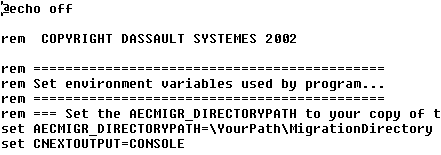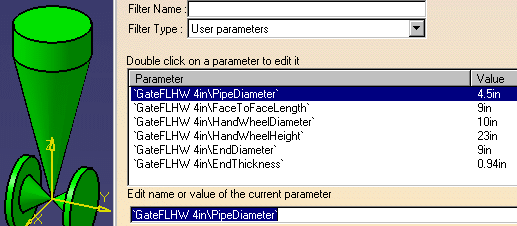- They can contain part geometry or they could also be empty, allowing you to add geometry later.
- They should have the attributes defined - when you run the command explained below, only the attribute values from the imported part will be added or changed in the template CATPart. The attributes should already exist.
- Pre-existing attributes will not be erased - they will remain after the procedure has been executed.
- If the CATParts have multiple representations then they will have corresponding CATShape documents.
- To create the body or physical shape of the part you will have to use the Part Design product, for which a separate license is required. You could, however, get by with the set of sample parts provided with this application if you remove any link to a design table.
Sample template CATPart documents are in the directory: ...intel_a\startup\EquipmentAndSystems\MigrationDirectory\PartGeneration\TemplateCATParts

A portion of the sample part definition file is shown above.
- You must have separate entries for each size. As you can see, GateFLHW 6 inches and GateFLHW 4 inches have separate entries.
- The name you enter in the Part Name field will be used to name the part in this application (the part number).
- The Type field refers to the part type as defined in the feature dictionary.
- The Template field names the template CATPart document you are using.
- You can use the same CATPart document for creating different sizes of that part.
- You can change the attribute names and values as needed, but make sure you follow the format shown above.
- You can also add a line showing a new attribute, again following this format.
You can use a special program - if you have one or can write one - to extract data from your parts. Or you can use the sample file mentioned above and enter the data in that file.

If the value of CNEXTOUTPUT equals CONSOLE then a window will inform you of the progress of the process. If you change the value of CONSOLE to a file name and location then the results of the process will be saved in that file.
For Unix run the command: CATAecPartGeneration.sh XXX.xml
The two images below show the template CATPart "Gate Valve FLHW" and a 4-inch gate valve FLHW after it was generated using the sample part definition file. You can see that the attribute values and geometry have changed.


![]()